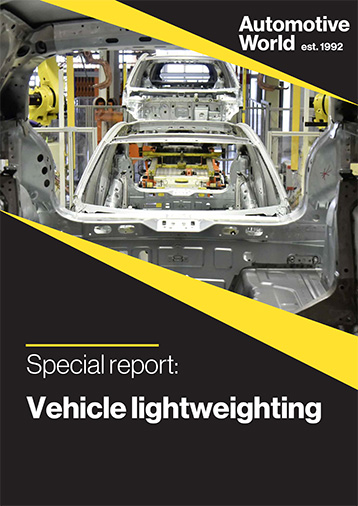Taking weight out of a car is still a goal, but the reasons have changed. As the automotive industry embraces electric mobility, the motivation for adopting lightweight designs has shifted fundamentally. During the current battery-electric vehicle (BEV) period, the goal is to extend vehicle range with the smallest possible battery. As battery costs fall, the goal will likely stretch to ensuring a low-carbon production footprint. This will mean shifting to low-carbon materials like ultra-high-strength steels instead of aluminium or carbon fibre reinforced polymers (CFRP). Furthermore, the choice of materials could at some point reflect carbon dioxide (CO2) targets across the vehicle’s entire lifecycle.
Evolving lightweighting concerns
One of the key factors—besides aerodynamics, driving style, etc—that are driving emissions from internal combustion engine (ICE) vehicles is vehicle weight, which has driven lightweighting efforts in this segment. However, the motivation for BEVs to reduce weight is different. On BEVs, balancing battery costs against vehicle weight became important in the early days of the modern industry, when high-cost batteries and lower energy recuperation possibilities drove lightweighting strategies. Now, as battery costs drop, more efficient electric drivetrains and higher recuperation rates are the norm, and OEMs have begun to switch back to conventional materials. Our analysis shows most doors on first- and second-generation BEVs featured aluminium, and some bodies-in-white (BIW) were made out of CFRP. Today, the latest BEVs often have steel BIW and doors.
As the automotive industry embraces electric mobility, the motivation for adopting lightweight designs has shifted fundamentally
A new focus on CO2 footprint
A new optimisation dimension is coming into play today—the car’s CO2 footprint. While today more than 90% of emissions from (mainly ICE) vehicles come from the operations, this will change in the future: As tailpipe emissions decrease, emissions from vehicles’ materials will increase both absolutely and relatively and soon become a larger share of lifecycle emissions. We estimate that the growing market share of BEVs that have higher baseline material emissions—and the changing energy mix required to power them—will boost material emissions from about 5-10% of a vehicles’ lifecycle emissions today to more than 90% in a clean grid mix (see image below).

Research shows lightweight materials are often energy- and carbon-intensive. Some examples with early estimates on their CO2 footprint include CFRP, which generates between 30 and 100 kg CO2 per kg CFRP produced. Virgin aluminium in China generates up to 20 kg CO2/kg, virgin aluminium (global benchmark) 4 kg CO2/kg and recycled aluminium 2.3 kg CO2/kg. Steel generates 2.6 kg CO2/kg, with green steel at 0.7 kg CO2/kg
Composite materials have great lightweight potential but require significant amounts of energy to produce and are difficult to recycle, thus limiting their application. Overall, the BEV CO2 footprint also depends on the country of production and its energy mix.
Future lightweighting trends
In the near-term, lightweight designs will remain relevant for ICEVs, but BEVs will ultimately replace these vehicles. For the newest BEVs, we expect lightweight designs to play only a minor role.
OEMs will likely focus on optimising three elements: the cost of the battery; the costs of lightweighting efforts and materials; and the vehicle’s CO2 footprint, which includes production and potentially lifecycle emissions at some point. This effort will likely result in increased switching to green low-level-lightweight materials, such as green steel and green (U)HSS.
Tomorrow’s lightweight materials applications
Low-volume high performance cars will probably remain attractive for lightweight materials, driven by performance goals and lower sensitivity to cost and CO2 penalties. Furthermore, materials with extreme weight or performance characteristics such as CFRP might also benefit from their reputations as exclusive luxury goods. In low-volume applications, CFRP has a lower cost gap to other materials than in mass-market segments and might offer greater design freedom.
Other low-volume vehicle OEMs are also experimenting with new materials, such as thermoformed panels produced from polypropylene and fibres. Such efforts could spill into mass-market applications if they manage to overcome cost, CO2, and recyclability issues.
About the authors: Patrick Schaufuss is a Partner and Stephan Fuchs is a Senior Expert at McKinsey & Company





